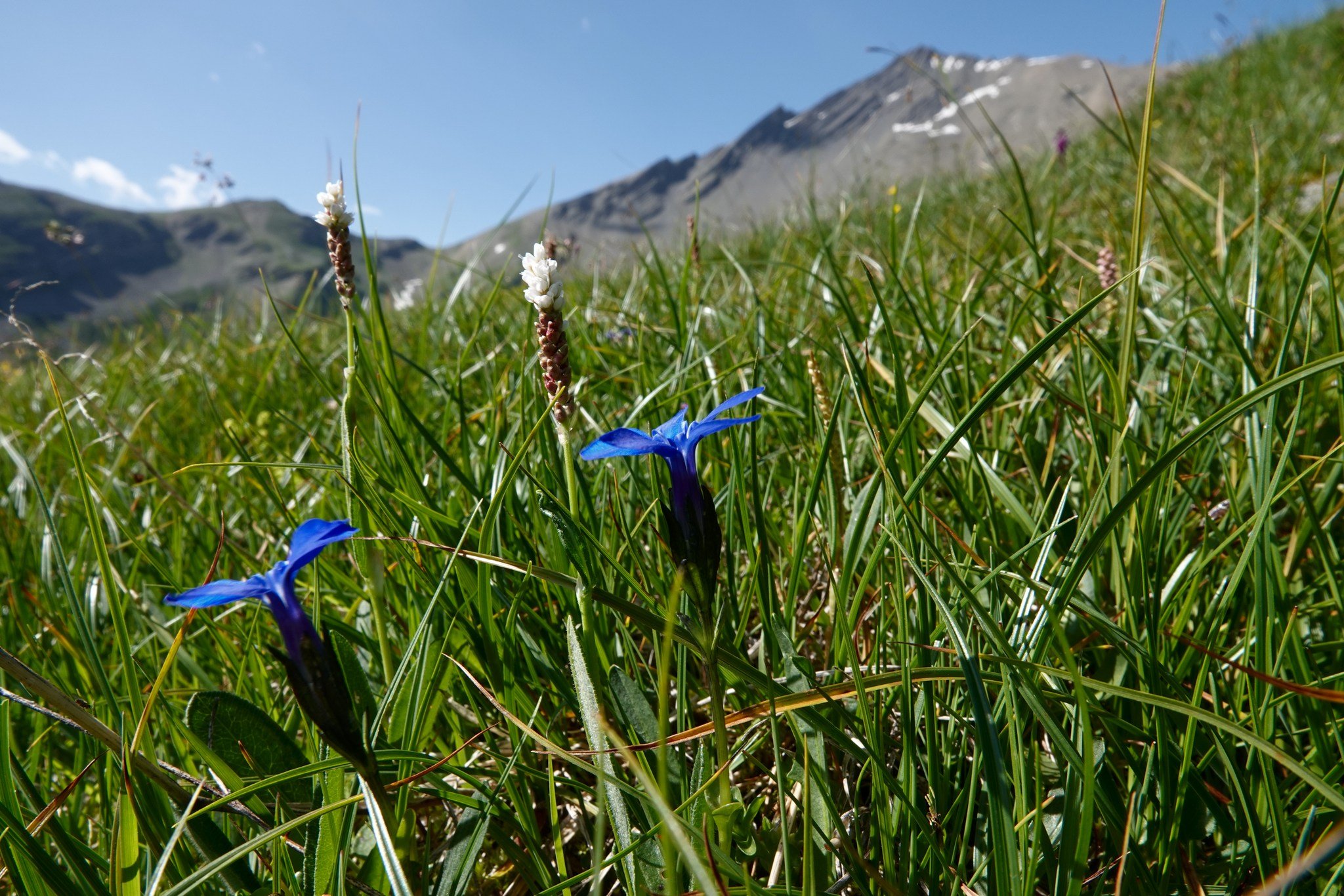
Excerpt from Bavarian Gentians by D H Lawrence
Bavarian gentians, big and dark, only dark
darkening the daytime torchlike with the smoking blueness of Pluto's gloom,
ribbed and torchlike, with their blaze of darkness spread blue
down flattening into points, flattened under the sweep of white day
torch-flower of the blue-smoking darkness, Pluto's dark-blue daze,
black lamps from the halls of Dis, burning dark blue,
giving off darkness, blue darkness, as Demeter's pale lamps give off light,
lead me then, lead me the way.
2023-07-11 Col d'Emy, Montricher-Albanne, France
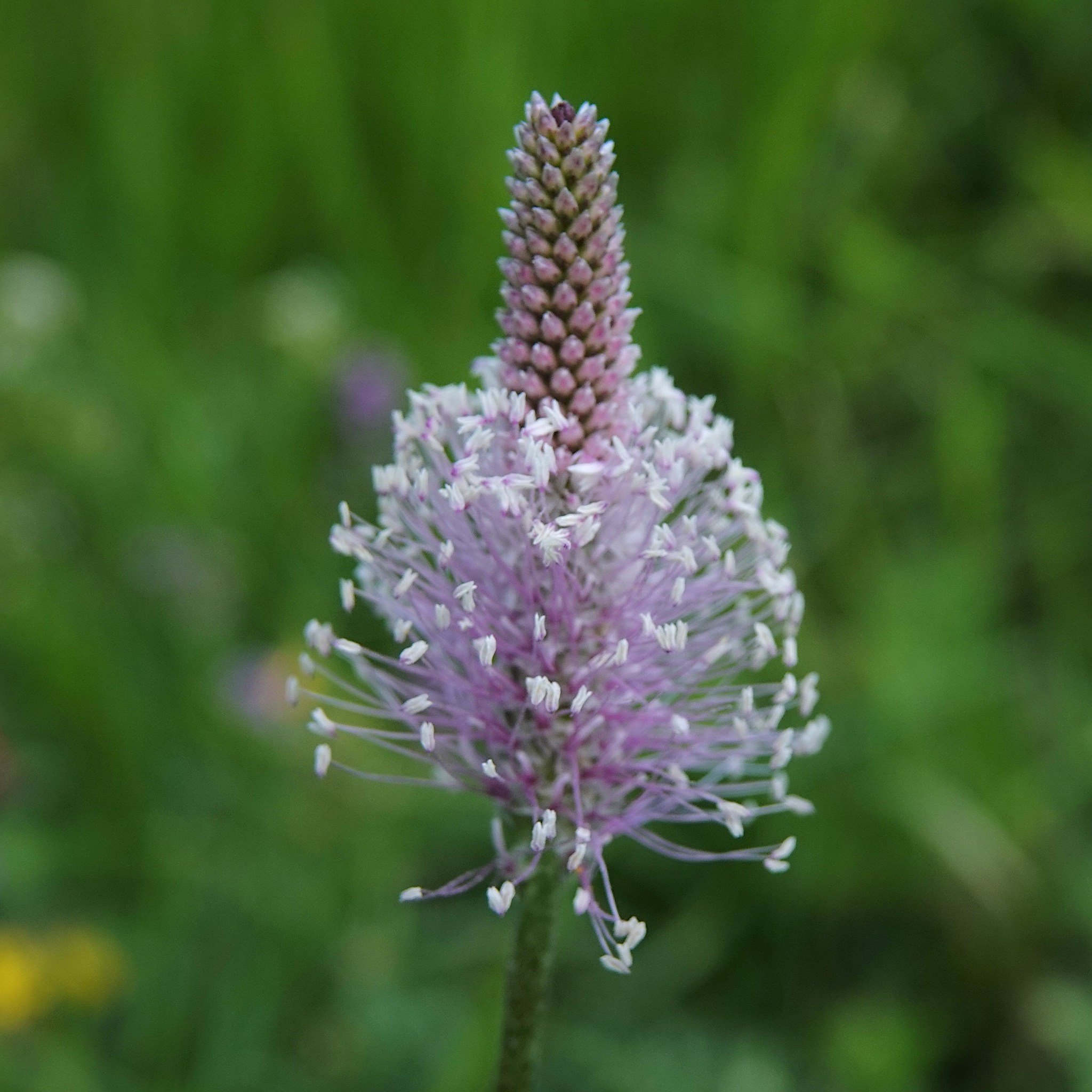
fr: Plantain moyen, from Latin Plantago media (foot-like, because the basal leaves in the plantain family lie flat on the ground). An edible green nutritionally similar to spinach.[doi:10.1080/03670244.2001.9991663] This is different from the banana-like plantains (Musa x paradisiaca, which comes through Spanish from platana in the Carib language of South America). More starch than salad. The sycamore tree is sometimes called plantain (from the Ancient Greek plantane) but those are much harder to eat.
2023-07-09 Lac de Parmol, Montricher-Albanne, France
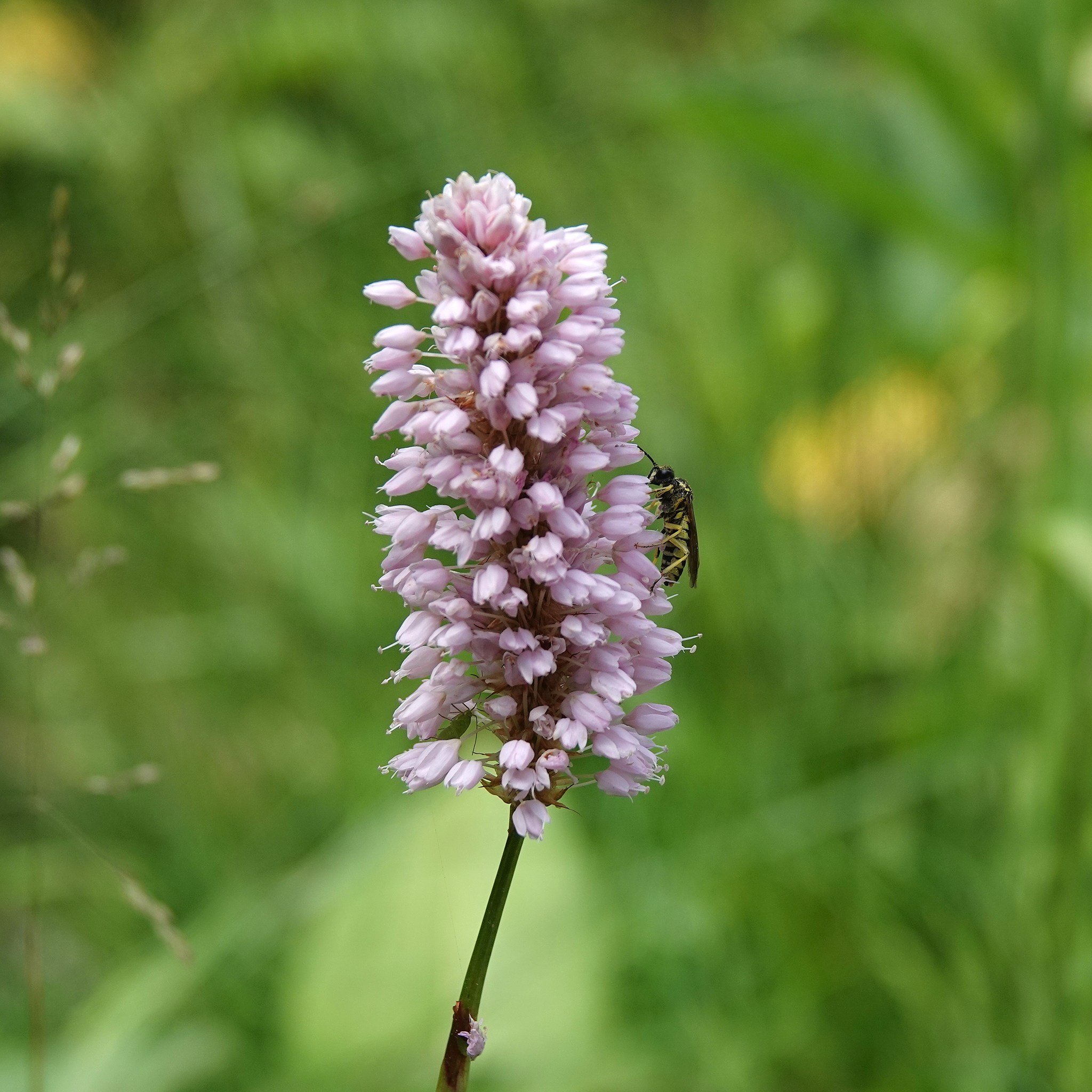
Bistorta officinalis (referring to its roots: bis+torta = twice-twisted). This is a favourite for Titania's fritillary caterpillars. Used in traditional medicine for numerous conditions, including those of the digestive tract, it is also a promising herbal remedy for industrial plumbing problems. In particular, it can prevent scale and corrosion within cooling systems running on hard water at 50°C.[doi:10.1016/j.jallcom.2018.08.198] No idea why this plant was chosen for study, but it is not unique. Organic compounds from a variety of plants will work just as well to coat the surface and bind to free ions.[doi:10.1016/j.mtsust.2023.100373]
2023-07-12 Lac de Pramol, Montricher-Albanne, France

Nacré porphyrin (latin Boloria titania) is a high elevation brush-footed butterfly whose caterpillars feed on bistort and other bog plants (hence its common name: purple bog fritillary). Over the past 50 years they have moved 175 m up in elevation, following the 2.5 °C increase in median temperature.[doi:10.1038/s41598-021-93826-0] This one was at 1700 m, so another 6.5 °C before they are completely pushed off the mountain* 8-(
2023-07-12 Lac de Pramol, Montricher-Albanne, France
* iNat has observations from as low as 1200 m elsewhere, so make that 10 °C
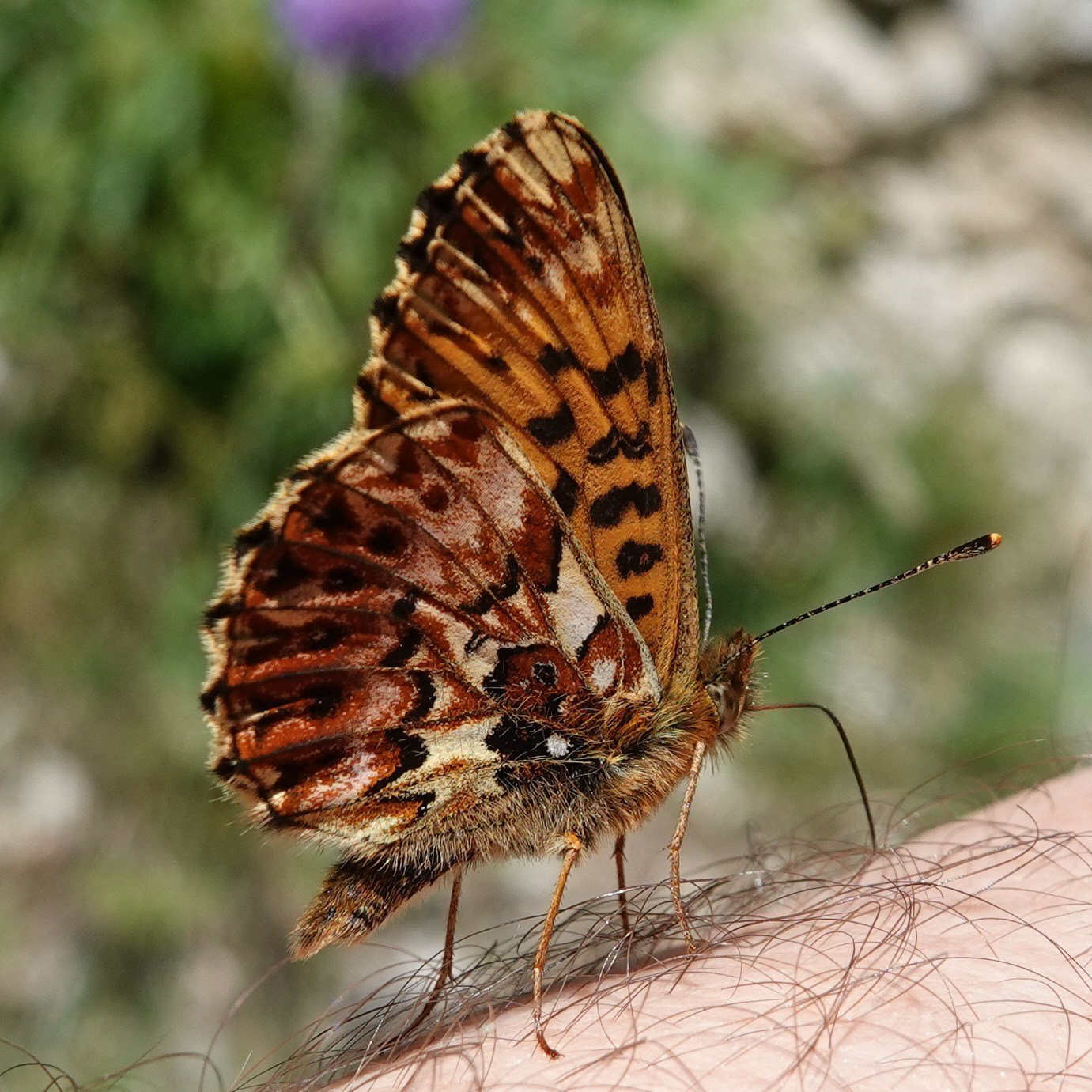
Called the “purple bog fritillary” because of the pinkish band of colour beside the black spots on the hind wing, and because its caterpillars feed on moist-soil plants such as bistort and bog bilberry.
2023-07-09 Lac de Pramol, Montricher-Albanne, France
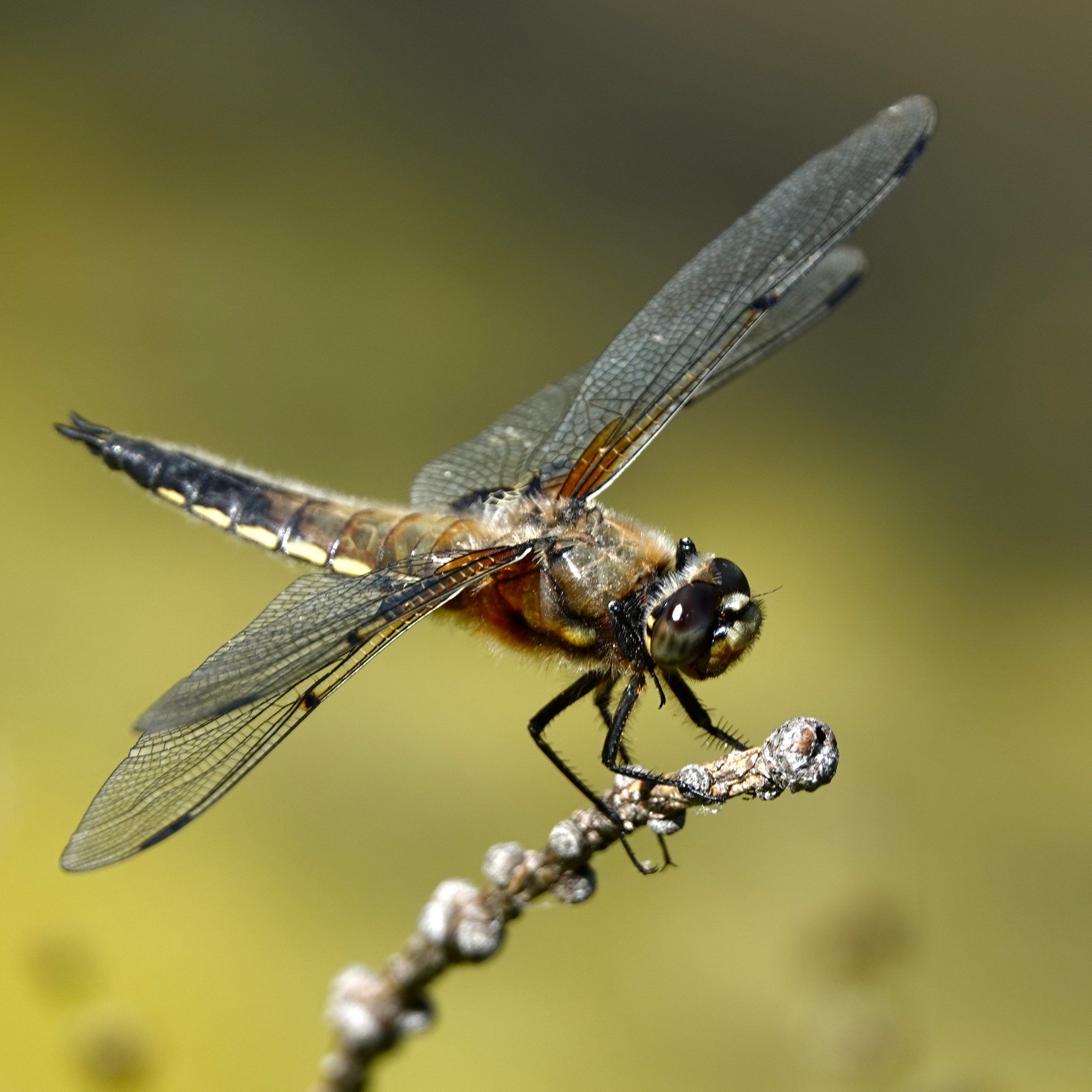
La quadrimaculée (Libellula quadrimaculata) is present across the entire northern hemisphere (holarctic). The complex vein patterns form corrugations, which stiffen the wings and improve lift, helping them glide.[1] They do migrate, but erratically, once every 10 years or so. This mixes up the genes within continents, but still leaves diversity between continents. Last common ancestor on the order of 400 kYA.[2]
2023-07-09 Lac de Pramol, Montricher-Albanne, France
[1] doi:10.1098/rstb.2015.0389 [2] doi:10.7717/peerj.11338
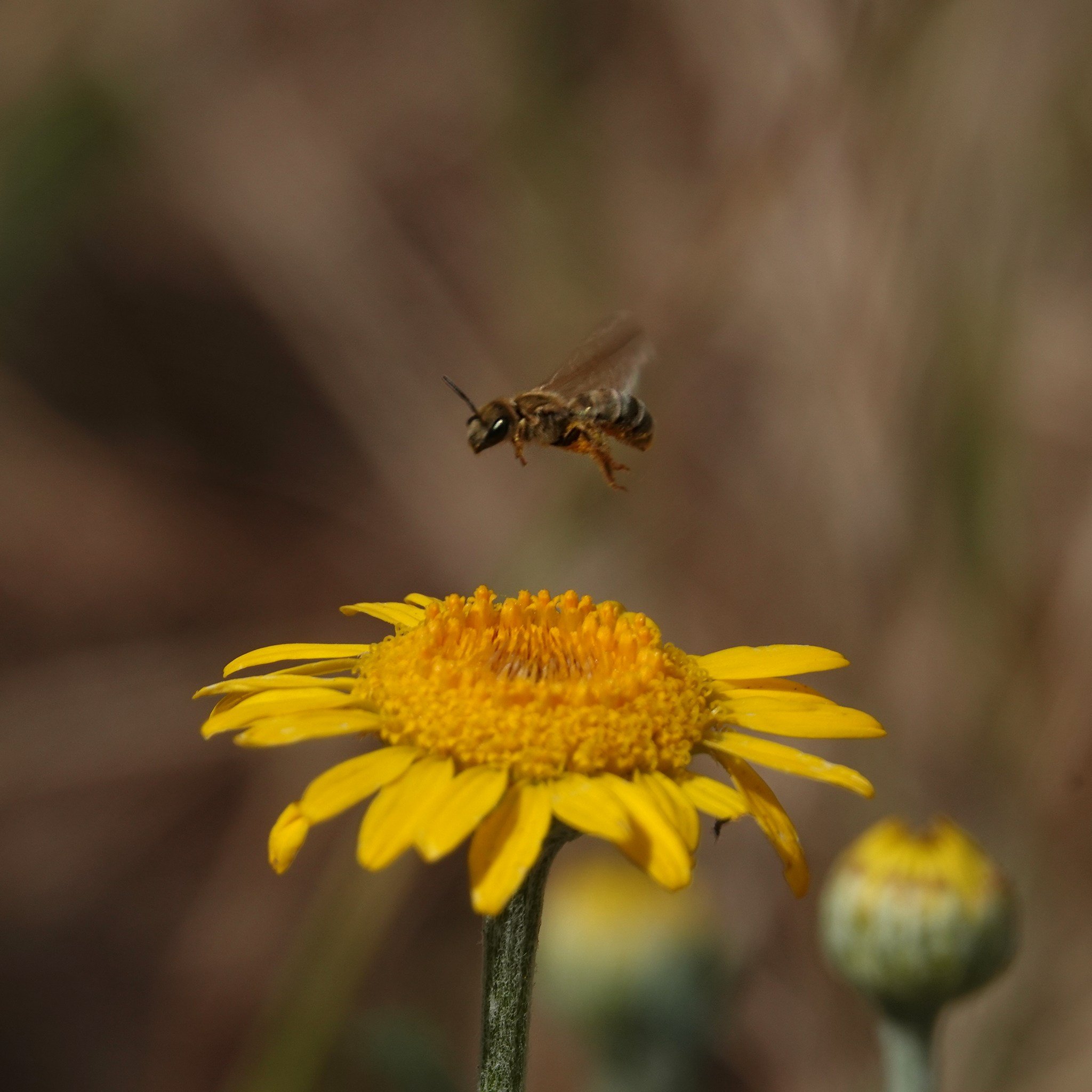
Helictus subauratus coming in for a landing. This is a social furrow bee, nesting in small groups underground. The golden marguerite landing pad (Cota tinctoria, aka dyer's chamomile or anthémis de teinturiers) is traditionally used to make yellow dye for textiles.[1] Apparently non-toxic (you don't want your dyers dying),[1] but it is used as an anti-cancer agent in some folk medicine traditions.[2]
2023-07-08 L'aéroport de Paris-Charles-de-Gaulle, Roissy-en-France
[1] doi:10.1080/00405000.2016.1257348 [2] doi:10.37360/blacpma.22.21.1.07
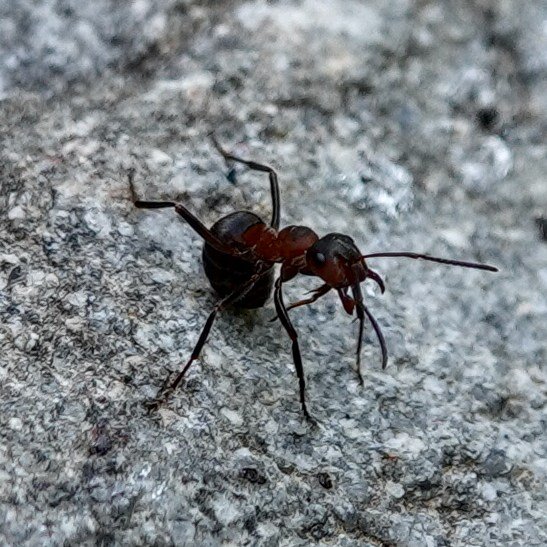
A wood ant in defensive posture. When threatened she will spray formic acid from her abdomen. This behaviour was on display when measuring the energy cost for running. For more timid species researchers could encourage ants to run on a treadmill for an hour by rolling a steel ball toward them, but many Formica rufus stood their ground, and could not be included in the data.[doi:10.1007/bf00689214]
2022-07-09 Les Karellis, France
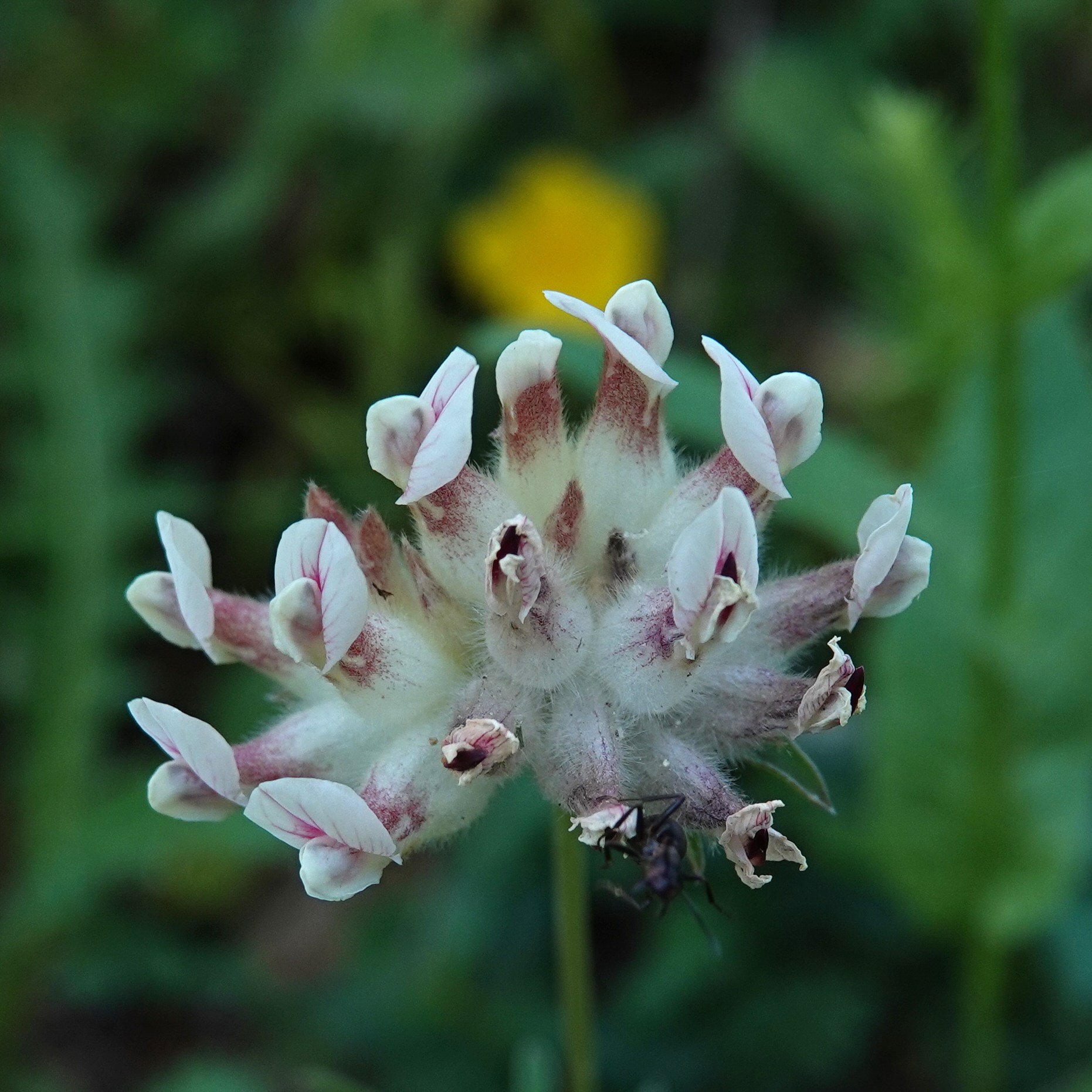
Anthyllis vulneraria (latin for downy-flowered wound-healer) is an ancient medicinal plant used to treat burns and rashes.[1] Also called woundwort, (wundklaver in Dutch), its flowers are almost as effective as penicillin against gram positive bacteria (Staphylococcus aureus), but ineffective against gram negative bacteria (E. coli). It can also be used to treat wounded soil: its symbiotic root bacteria have evolved to tolerate heavy metals, allowing A. vulneraria to grow over mine tailings and keep the contamination in place.[2]
2023-07-10 Les Karellis, France
[1] doi:10.1007/s40415-021-00736-6 [2] doi:10.1128/AEM.01735-16
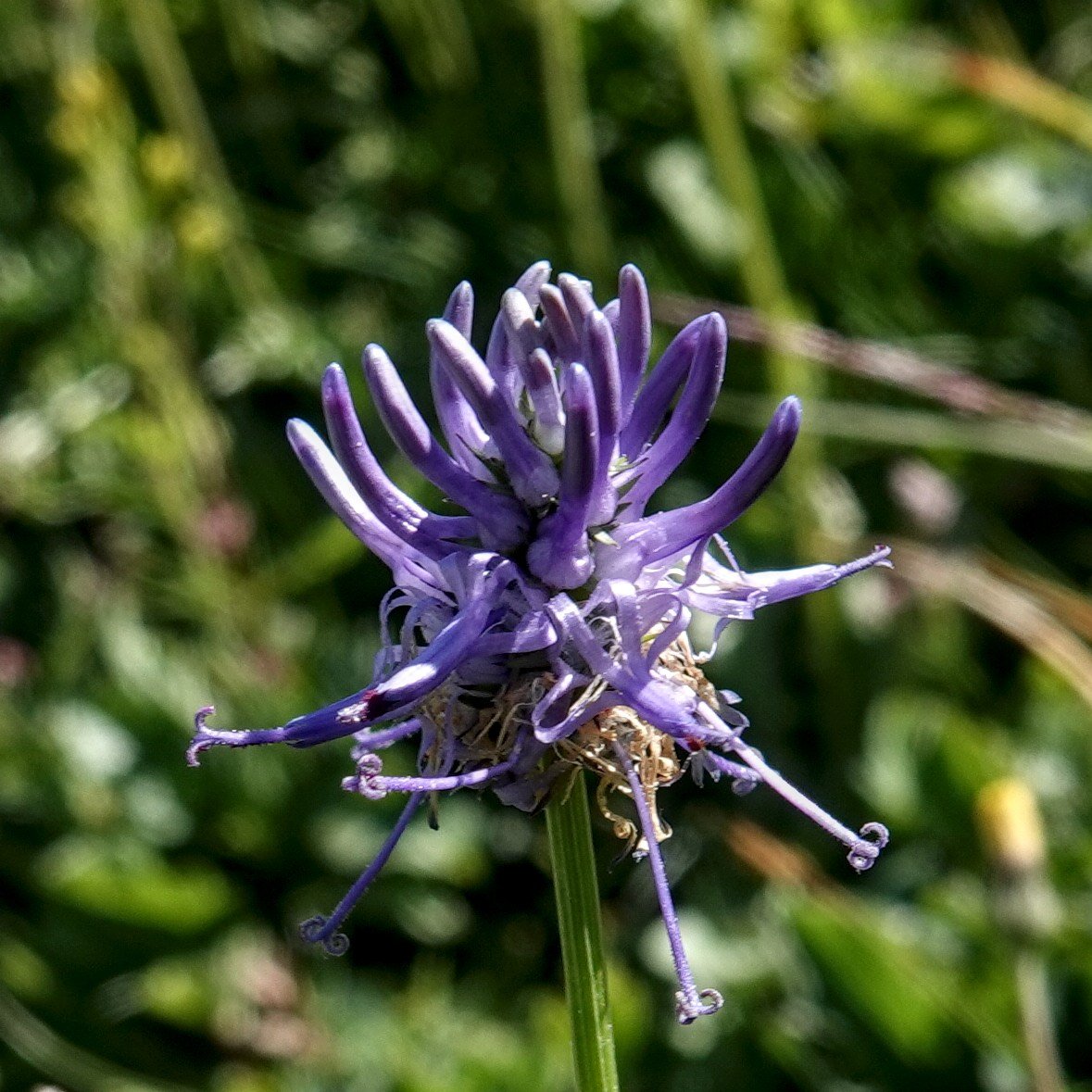
A plant from high in the Alps, Phyteuma betonicifolium diverged from its nearest relative about 1.2 MYA. That means it survived as a species through several glacial maxima when the Alps were completely covered in ice, taking refuge in the surrounding lowlands.
2023-07-10 La Plange, Montricher-Albanne, France
[1] Vecera, Laura-Marie. "Exploring the ecological and evolutionary drivers of diversification of the alpine plant genus Phyteuma (Campanulaceae)." (2014).
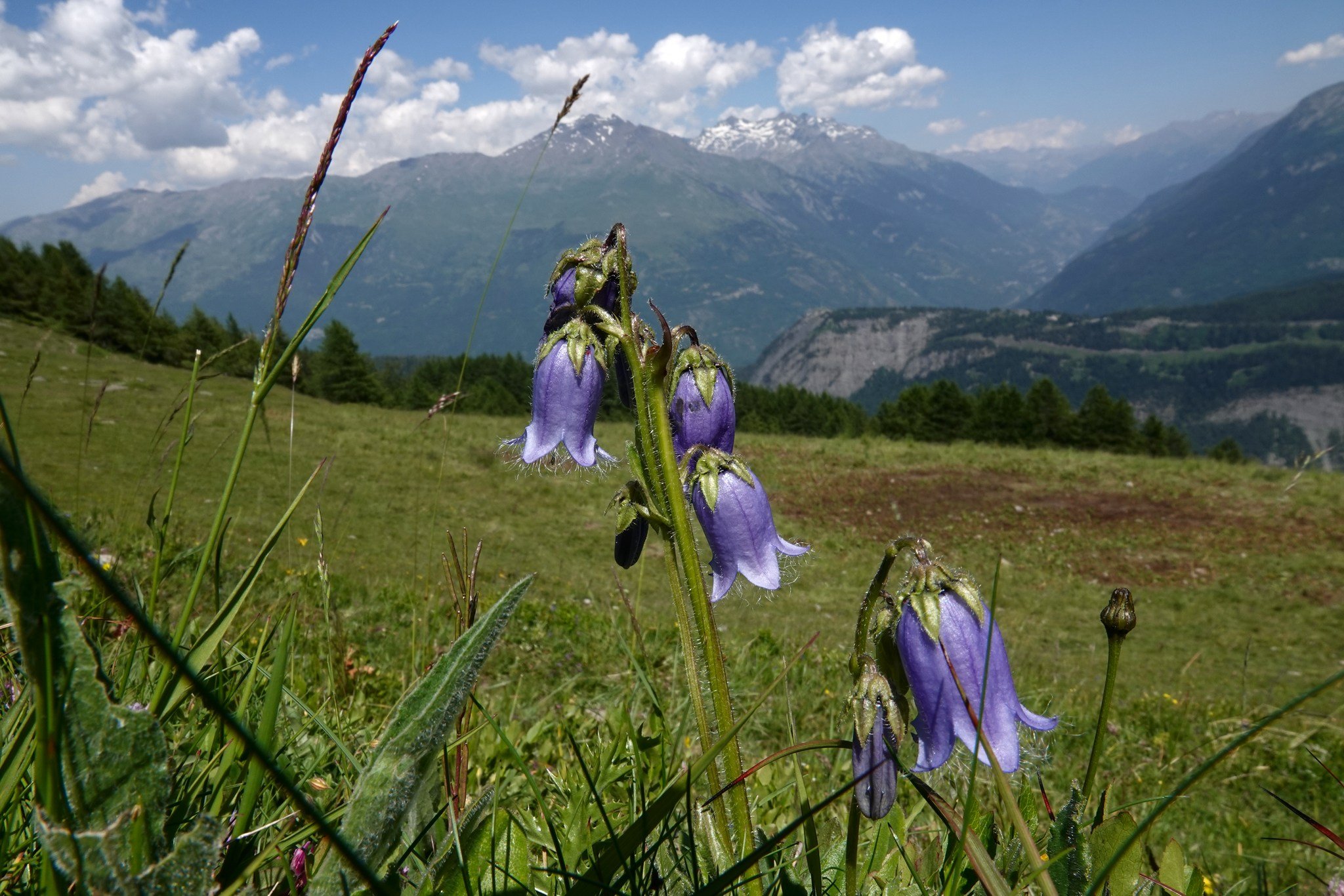
Campanule barbue (latin Campanula barbata), so called because of its fuzzy flowers. Growing above 2000 m it protects itself from the sun with UV absorbing flavinoids. These also act as antioxidants, binding to free radicals produced by ionizing radiation. Even within the same species there are higher antioxidant levels in plants grown at higher elevation.
2023-07-10 La Plange, Montricher-Albanne, France
[1] doi:10.1016/S0031-9422(00)00423-4 [2] doi:10.1111/j.1365-3040.1996.tb00235.x
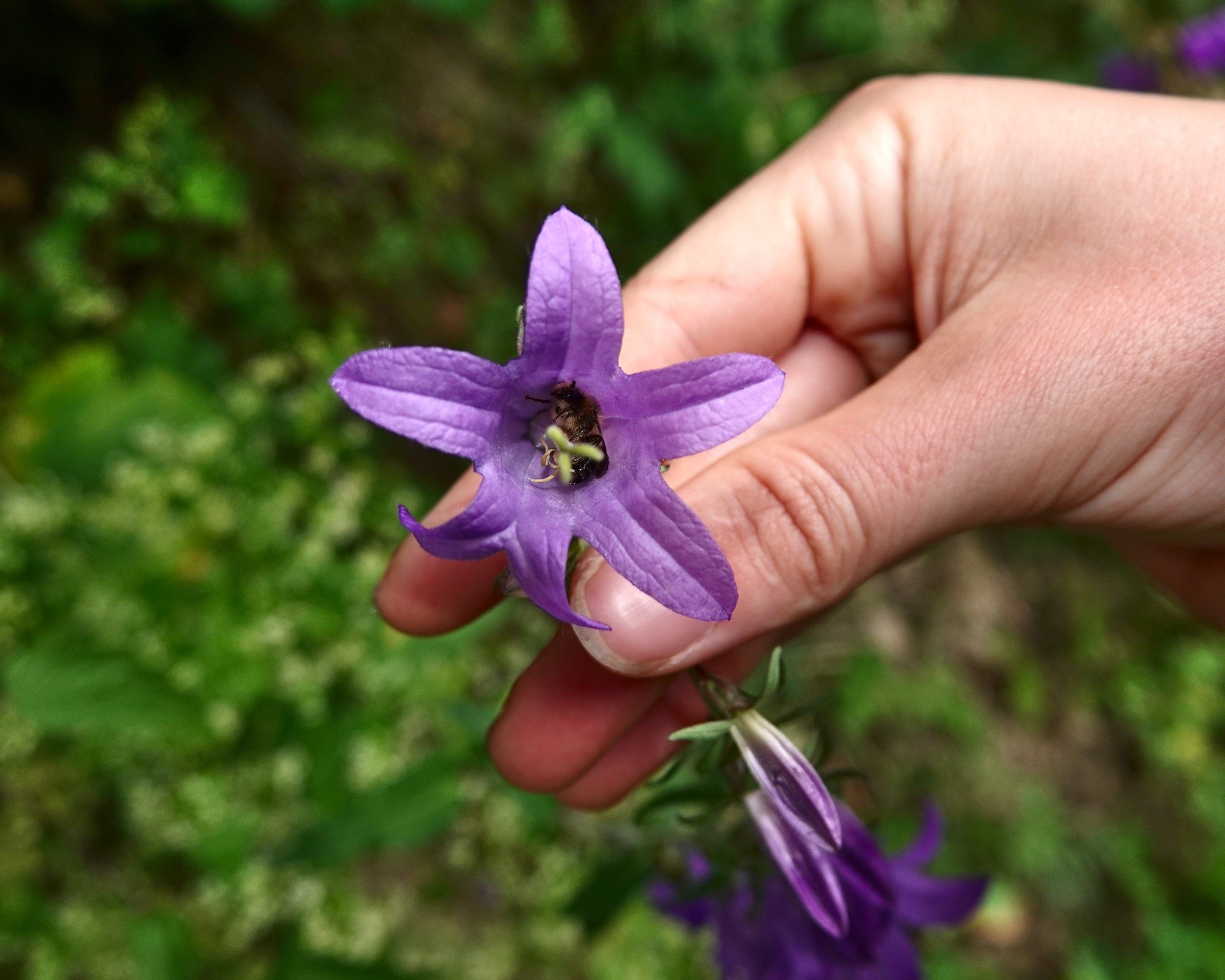
Campanula rapunculus,* known in German as Rapunzel-Glockenblume, is another edible from the Campanula family, this one worth giving up your first-born to have some in your salad.[1] The bee may be a rampion scissor bee (Chelostoma rapunculi), or perhaps a sleepy scissor bee (Chelostoma florisomne), but that's a different fairytale.
2023-07-12 Ruisseau des Moulins, Les Karellis, France
[1] Rapunzel [wikipedia]
* Like the other rampions (genus Phyteuma), there are dozens of species of Campanula in the Alps. I cannot be certain this is C. rapunculus.

Raiponce en épi (Phyteuma spicatum) is one of a couple of dozen species of rampion growing in the Alps. Like other rampion it is a tasty addition to salads, with a sweet flower and radish-like root.[1] The large number of microclimates, from forest to alpine, encourages speciation, in this case by splitting and/or fusing chromosomes (dysploidy).[2] This makes it difficult to pin down the species in a photograph.
2023-07-09 Les Karellis, France
[1] cuisinesauvage.org [2] doi:10.1016/j.ympev.2013.07.015
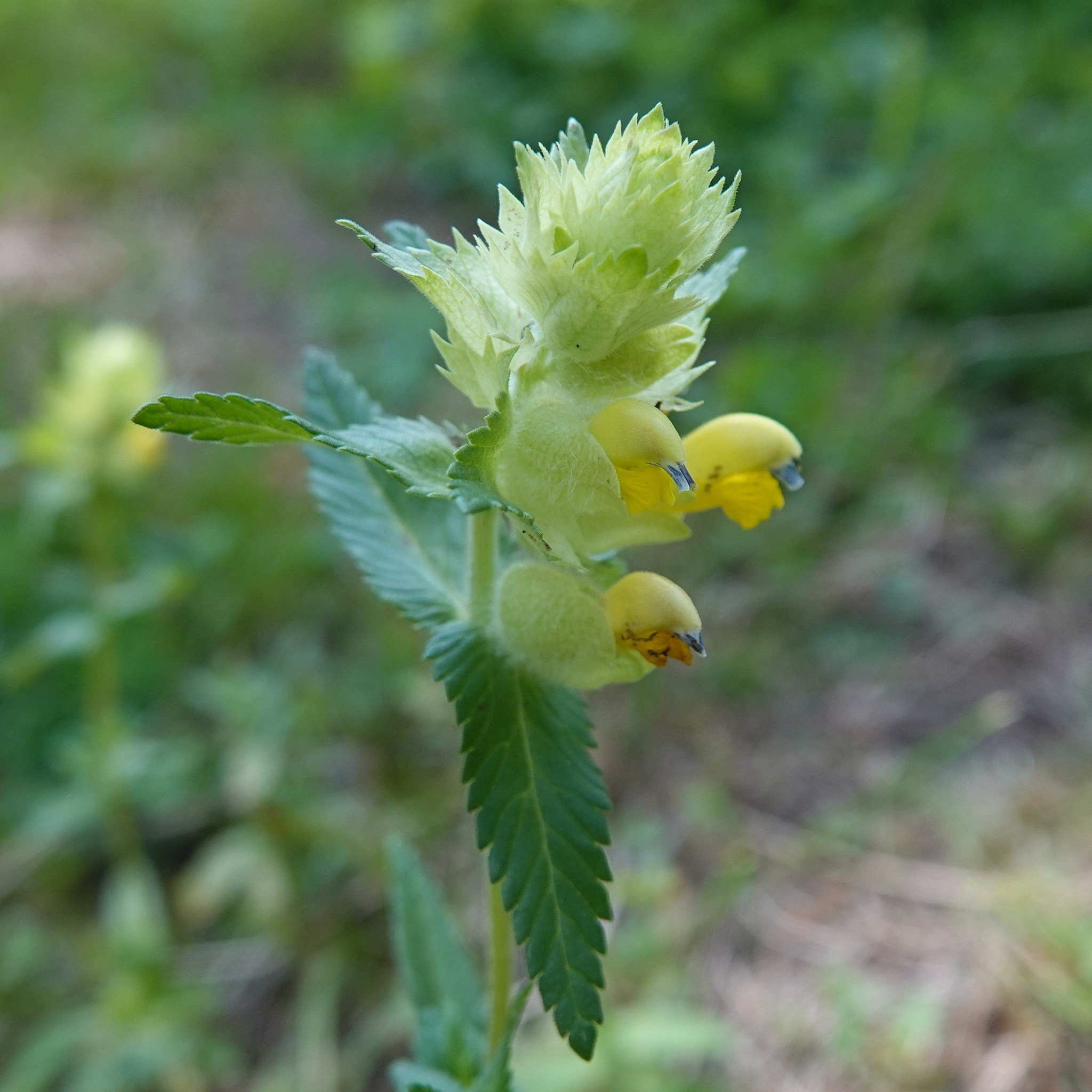
Good parasites? Rhinanthus (nose flowers) grow into the roots of grasses, stealing minerals and nutrients.[doi:10.1007/BF02803240] Grasses thrive on agricultural lands rich in fertilizer, so much so that other species can't compete. You can restore the land to a more natural state by sprinkling some cheap Rhinanthus seeds, reducing grass biomass by a factor of 20 and leaving space for a more diverse ecosystem. When balance is restored you can do an early cutting. The annual Rhinanthus has poor seed persistence, so will be mostly wiped out. What a combination: rapid colonization but easy control!
2023-07-09 Les Karellis, France
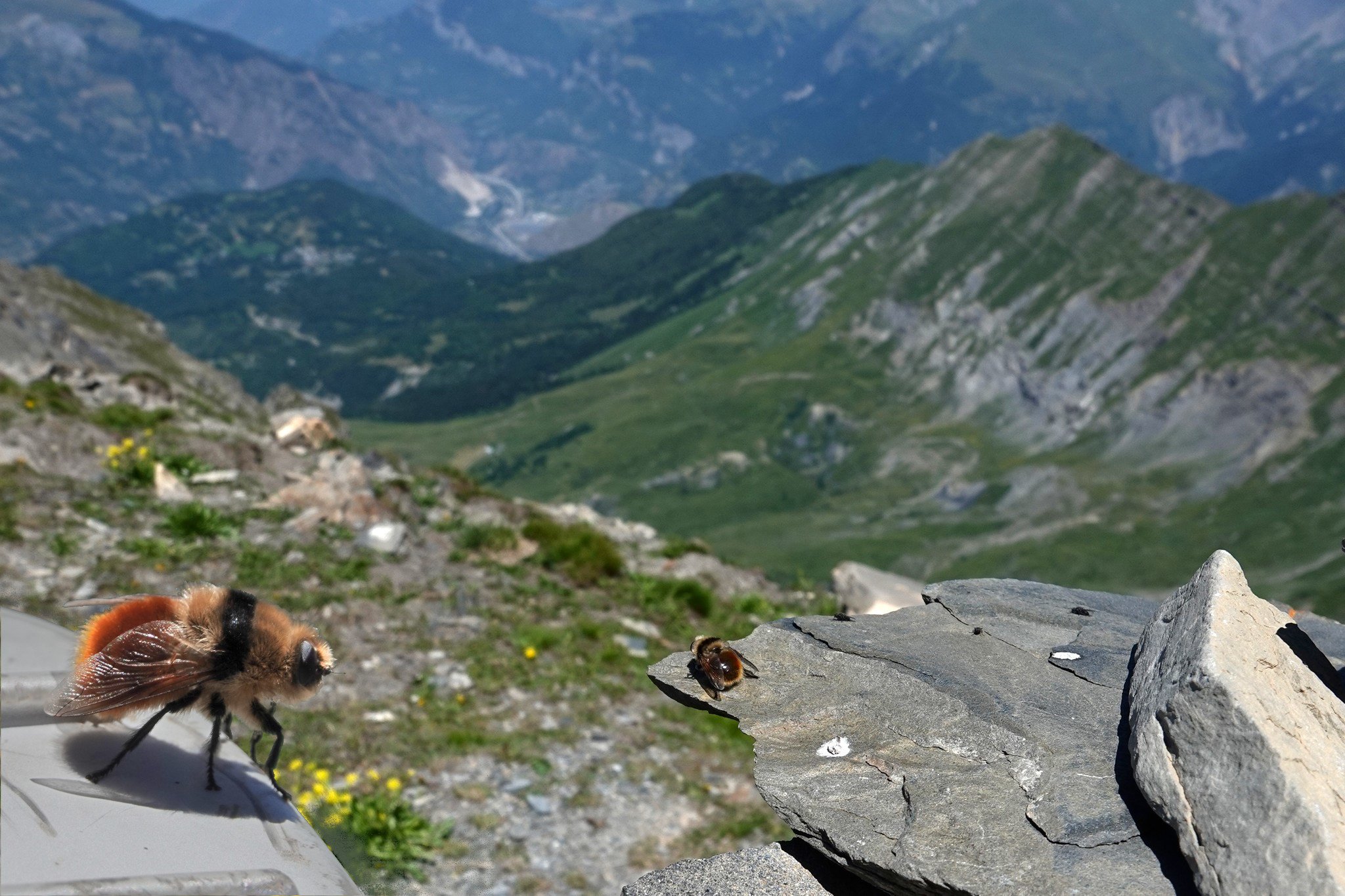
Not a bee, this is a botfly surveying his domain (with profile inset). Adults don't have working mouths, so they only have a couple of weeks to reproduce. Rather than laying eggs, the female hatches them internally then ejects live young into the nose of an unsuspecting deer.* These larvae crawl through the nasal passages and set up residence at the base of the tongue,** Usually they don't cause much harm other than a persistent cough. After growing to about 3 cm, they let go and are coughed out on the ground. Pupate and repeat.
2023-07-11 Pointe d'Emy, Les Karellis, France
* C. stimulator for roe deer, or C. auribarbis for fallow and red deer. [doi:10.3390/ani11123382]
** They may also attach to the throat, the lungs, the nasal passages, and in one case the base of the brain. [doi:10.7325/Galemys.2021.A2]
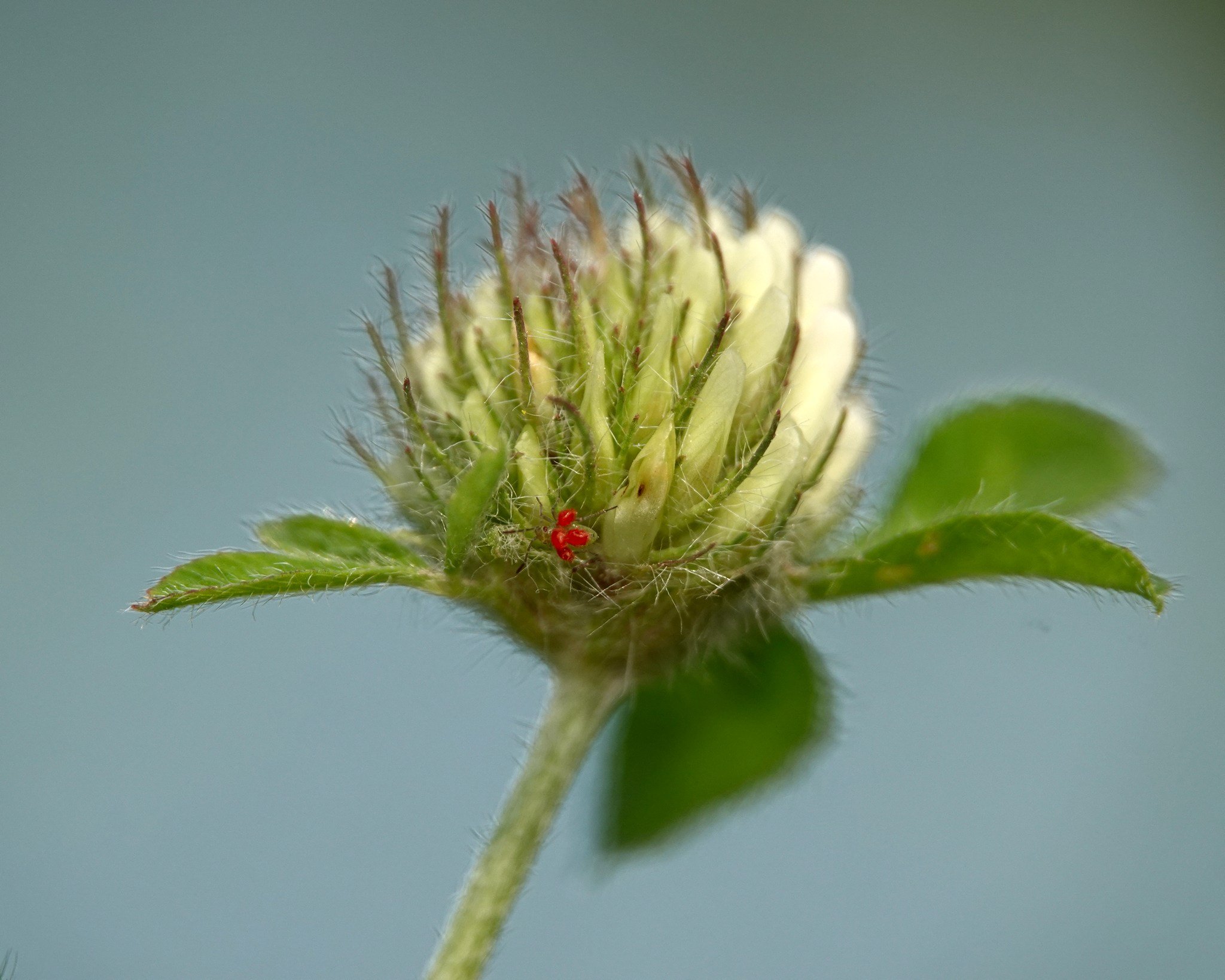
A big burden for a little bug, carrying around four mite larvae. Likely they have embedded their mouths into its shell and injected digestive enzymes, making the soup they need to grow into adults (see for example the velvet mite Trombidium holosericeum [wikipedia]). One can forgive the clover its sense of schadenfreude, for otherwise the bug would be feeding on it.
2023-07-09 Les Karellis, France
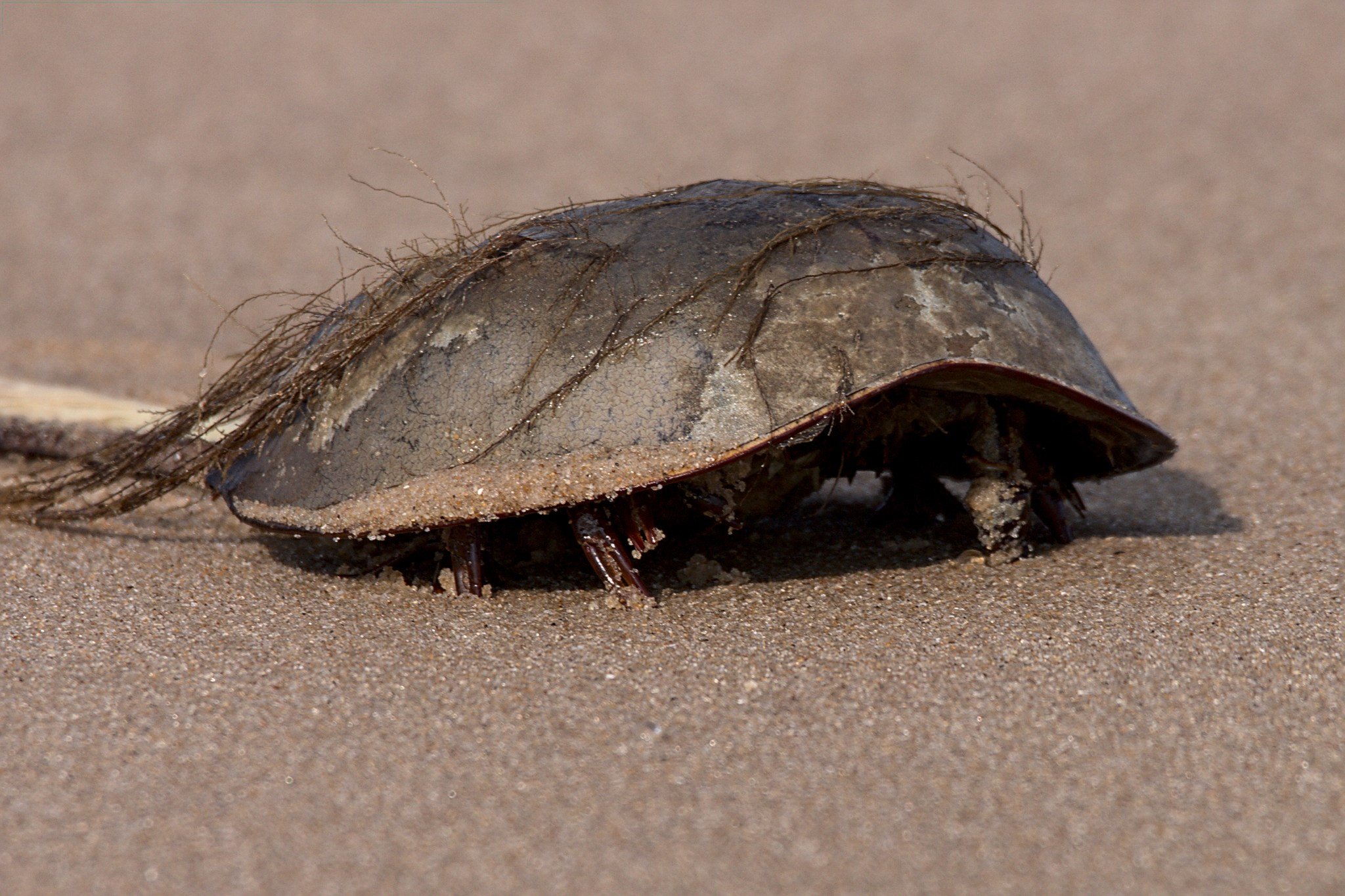
A horseshoe crab* venturing across the beach. Called Limulus polyphemus after the cyclops from The Odyssey because it was thought to have only one eye, but there are nine (three on each side, two in the front and one below the shell). Even the tail has photoreceptors, which helps it entrain its clocks to the day-night cycle. This is used to adjust the sensitivity of the retinal cells, requiring far fewer photons to trigger a train of nerve pulses from the eye to the rest of the brain. [doi:10.1016/j.asd.2006.07.002]
2023-06-13 Cape Henlopen State Park, Delaware
* Called a crab, but it is more closely related to spiders than to crustaceans.
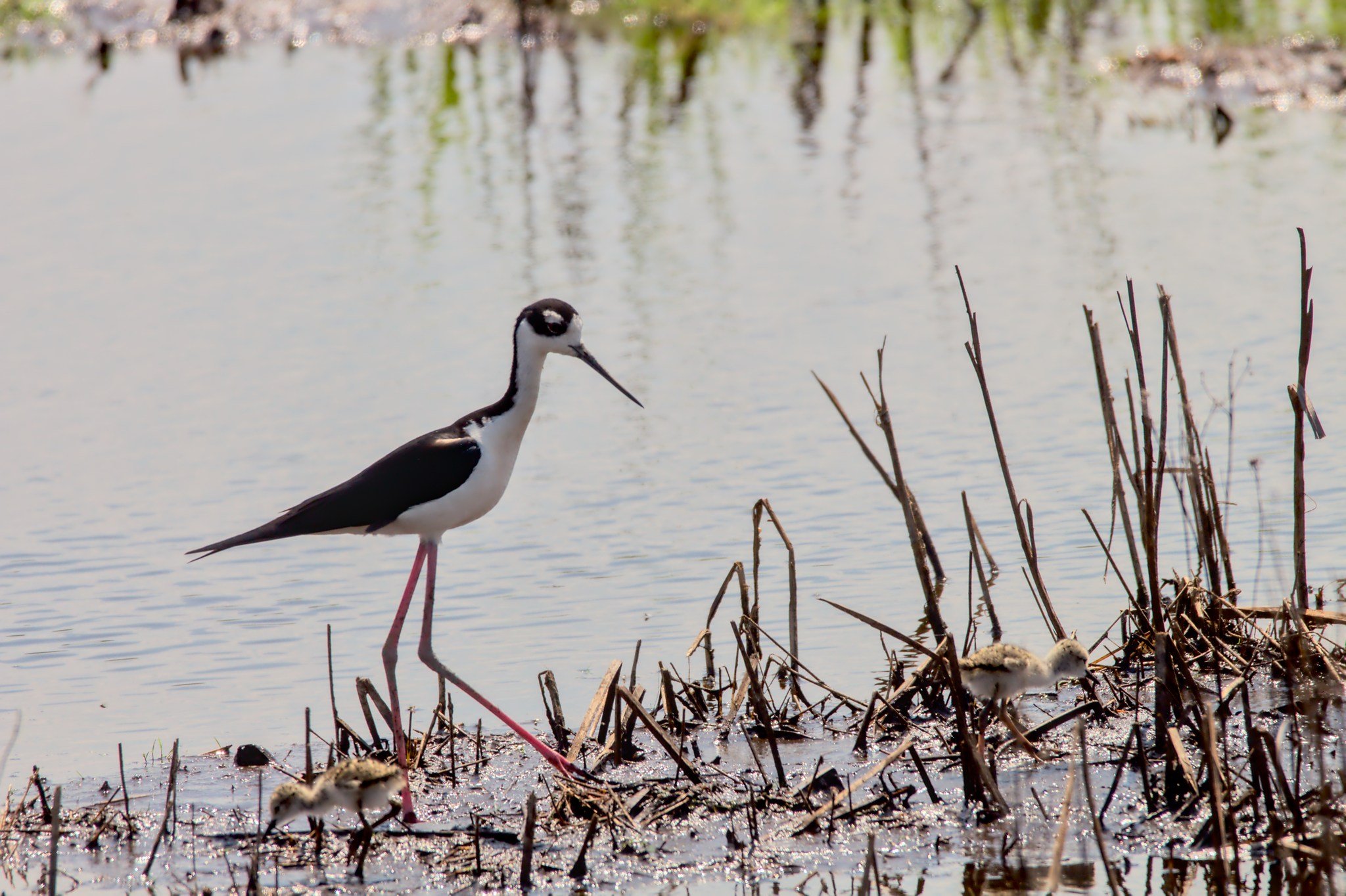
Himantopus mexicanus: same family as the avocets but without the recurvirostra hex. More pecking and less scything. They are attentive parents, either distracting predators with their funny walks, and dive bombing them when that fails. Even so survival rates aren't great, with only 1 in 4 reaching adulthood (foxes need to eat, too).
2023-06-14 Bombay Hook, Delaware
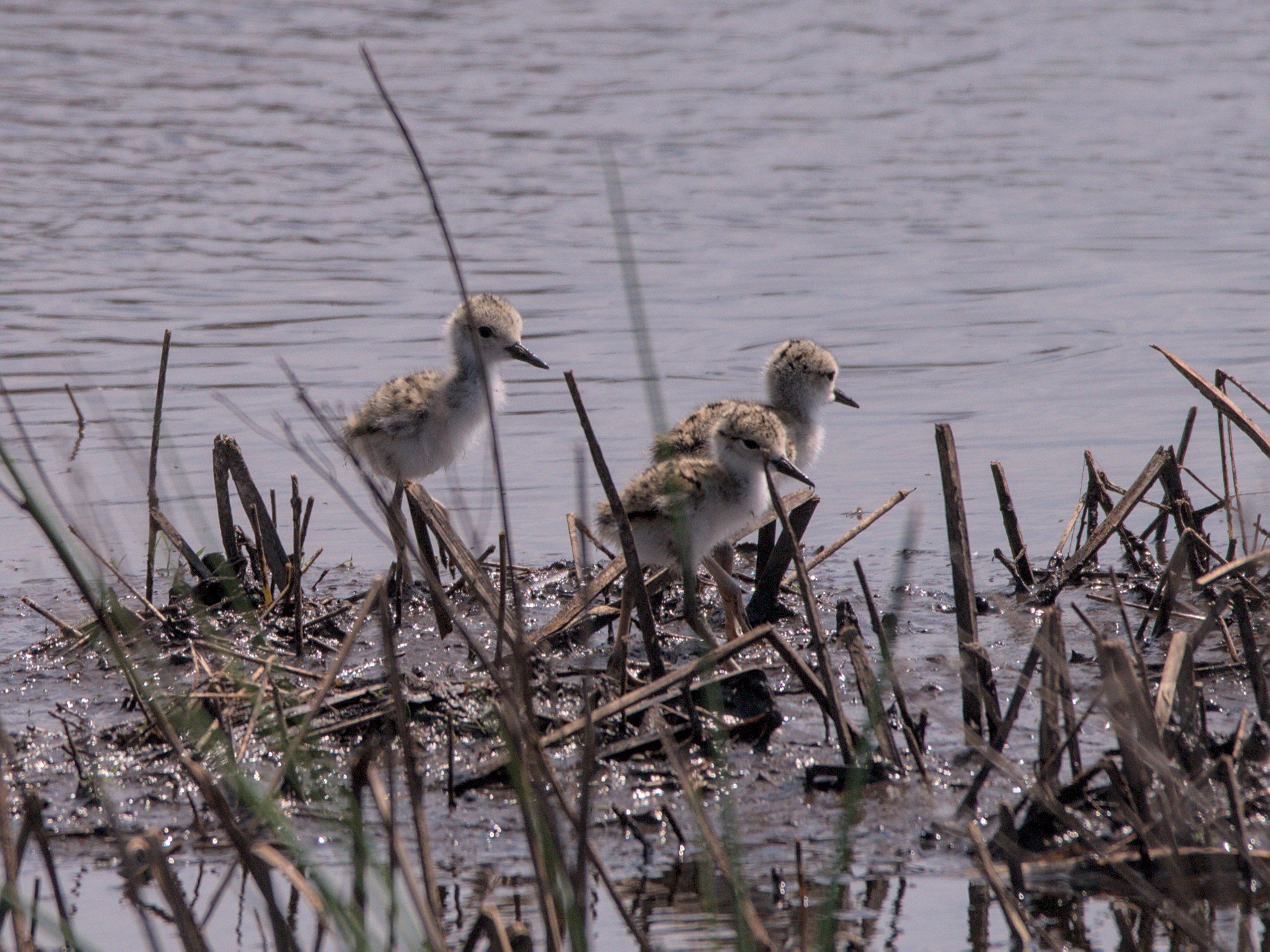

Recurvirostra americana, because of its reverse-curved beak. This can be used like a scythe, sweeping the muddy water for brine shrimp.
2023-06-14 Bombay Hook, Delaware




















Excerpt from Bavarian Gentians by D H Lawrence
Bavarian gentians, big and dark, only dark
darkening the daytime torchlike with the smoking blueness of Pluto's gloom,
ribbed and torchlike, with their blaze of darkness spread blue
down flattening into points, flattened under the sweep of white day
torch-flower of the blue-smoking darkness, Pluto's dark-blue daze,
black lamps from the halls of Dis, burning dark blue,
giving off darkness, blue darkness, as Demeter's pale lamps give off light,
lead me then, lead me the way.
2023-07-11 Col d'Emy, Montricher-Albanne, France
fr: Plantain moyen, from Latin Plantago media (foot-like, because the basal leaves in the plantain family lie flat on the ground). An edible green nutritionally similar to spinach.[doi:10.1080/03670244.2001.9991663] This is different from the banana-like plantains (Musa x paradisiaca, which comes through Spanish from platana in the Carib language of South America). More starch than salad. The sycamore tree is sometimes called plantain (from the Ancient Greek plantane) but those are much harder to eat.
2023-07-09 Lac de Parmol, Montricher-Albanne, France
Bistorta officinalis (referring to its roots: bis+torta = twice-twisted). This is a favourite for Titania's fritillary caterpillars. Used in traditional medicine for numerous conditions, including those of the digestive tract, it is also a promising herbal remedy for industrial plumbing problems. In particular, it can prevent scale and corrosion within cooling systems running on hard water at 50°C.[doi:10.1016/j.jallcom.2018.08.198] No idea why this plant was chosen for study, but it is not unique. Organic compounds from a variety of plants will work just as well to coat the surface and bind to free ions.[doi:10.1016/j.mtsust.2023.100373]
2023-07-12 Lac de Pramol, Montricher-Albanne, France
Nacré porphyrin (latin Boloria titania) is a high elevation brush-footed butterfly whose caterpillars feed on bistort and other bog plants (hence its common name: purple bog fritillary). Over the past 50 years they have moved 175 m up in elevation, following the 2.5 °C increase in median temperature.[doi:10.1038/s41598-021-93826-0] This one was at 1700 m, so another 6.5 °C before they are completely pushed off the mountain* 8-(
2023-07-12 Lac de Pramol, Montricher-Albanne, France
* iNat has observations from as low as 1200 m elsewhere, so make that 10 °C
Called the “purple bog fritillary” because of the pinkish band of colour beside the black spots on the hind wing, and because its caterpillars feed on moist-soil plants such as bistort and bog bilberry.
2023-07-09 Lac de Pramol, Montricher-Albanne, France
La quadrimaculée (Libellula quadrimaculata) is present across the entire northern hemisphere (holarctic). The complex vein patterns form corrugations, which stiffen the wings and improve lift, helping them glide.[1] They do migrate, but erratically, once every 10 years or so. This mixes up the genes within continents, but still leaves diversity between continents. Last common ancestor on the order of 400 kYA.[2]
2023-07-09 Lac de Pramol, Montricher-Albanne, France
[1] doi:10.1098/rstb.2015.0389 [2] doi:10.7717/peerj.11338
Helictus subauratus coming in for a landing. This is a social furrow bee, nesting in small groups underground. The golden marguerite landing pad (Cota tinctoria, aka dyer's chamomile or anthémis de teinturiers) is traditionally used to make yellow dye for textiles.[1] Apparently non-toxic (you don't want your dyers dying),[1] but it is used as an anti-cancer agent in some folk medicine traditions.[2]
2023-07-08 L'aéroport de Paris-Charles-de-Gaulle, Roissy-en-France
[1] doi:10.1080/00405000.2016.1257348 [2] doi:10.37360/blacpma.22.21.1.07
A wood ant in defensive posture. When threatened she will spray formic acid from her abdomen. This behaviour was on display when measuring the energy cost for running. For more timid species researchers could encourage ants to run on a treadmill for an hour by rolling a steel ball toward them, but many Formica rufus stood their ground, and could not be included in the data.[doi:10.1007/bf00689214]
2022-07-09 Les Karellis, France
Anthyllis vulneraria (latin for downy-flowered wound-healer) is an ancient medicinal plant used to treat burns and rashes.[1] Also called woundwort, (wundklaver in Dutch), its flowers are almost as effective as penicillin against gram positive bacteria (Staphylococcus aureus), but ineffective against gram negative bacteria (E. coli). It can also be used to treat wounded soil: its symbiotic root bacteria have evolved to tolerate heavy metals, allowing A. vulneraria to grow over mine tailings and keep the contamination in place.[2]
2023-07-10 Les Karellis, France
[1] doi:10.1007/s40415-021-00736-6 [2] doi:10.1128/AEM.01735-16
A plant from high in the Alps, Phyteuma betonicifolium diverged from its nearest relative about 1.2 MYA. That means it survived as a species through several glacial maxima when the Alps were completely covered in ice, taking refuge in the surrounding lowlands.
2023-07-10 La Plange, Montricher-Albanne, France
[1] Vecera, Laura-Marie. "Exploring the ecological and evolutionary drivers of diversification of the alpine plant genus Phyteuma (Campanulaceae)." (2014).
Campanule barbue (latin Campanula barbata), so called because of its fuzzy flowers. Growing above 2000 m it protects itself from the sun with UV absorbing flavinoids. These also act as antioxidants, binding to free radicals produced by ionizing radiation. Even within the same species there are higher antioxidant levels in plants grown at higher elevation.
2023-07-10 La Plange, Montricher-Albanne, France
[1] doi:10.1016/S0031-9422(00)00423-4 [2] doi:10.1111/j.1365-3040.1996.tb00235.x
Campanula rapunculus,* known in German as Rapunzel-Glockenblume, is another edible from the Campanula family, this one worth giving up your first-born to have some in your salad.[1] The bee may be a rampion scissor bee (Chelostoma rapunculi), or perhaps a sleepy scissor bee (Chelostoma florisomne), but that's a different fairytale.
2023-07-12 Ruisseau des Moulins, Les Karellis, France
[1] Rapunzel [wikipedia]
* Like the other rampions (genus Phyteuma), there are dozens of species of Campanula in the Alps. I cannot be certain this is C. rapunculus.
Raiponce en épi (Phyteuma spicatum) is one of a couple of dozen species of rampion growing in the Alps. Like other rampion it is a tasty addition to salads, with a sweet flower and radish-like root.[1] The large number of microclimates, from forest to alpine, encourages speciation, in this case by splitting and/or fusing chromosomes (dysploidy).[2] This makes it difficult to pin down the species in a photograph.
2023-07-09 Les Karellis, France
[1] cuisinesauvage.org [2] doi:10.1016/j.ympev.2013.07.015
Good parasites? Rhinanthus (nose flowers) grow into the roots of grasses, stealing minerals and nutrients.[doi:10.1007/BF02803240] Grasses thrive on agricultural lands rich in fertilizer, so much so that other species can't compete. You can restore the land to a more natural state by sprinkling some cheap Rhinanthus seeds, reducing grass biomass by a factor of 20 and leaving space for a more diverse ecosystem. When balance is restored you can do an early cutting. The annual Rhinanthus has poor seed persistence, so will be mostly wiped out. What a combination: rapid colonization but easy control!
2023-07-09 Les Karellis, France
Not a bee, this is a botfly surveying his domain (with profile inset). Adults don't have working mouths, so they only have a couple of weeks to reproduce. Rather than laying eggs, the female hatches them internally then ejects live young into the nose of an unsuspecting deer.* These larvae crawl through the nasal passages and set up residence at the base of the tongue,** Usually they don't cause much harm other than a persistent cough. After growing to about 3 cm, they let go and are coughed out on the ground. Pupate and repeat.
2023-07-11 Pointe d'Emy, Les Karellis, France
* C. stimulator for roe deer, or C. auribarbis for fallow and red deer. [doi:10.3390/ani11123382]
** They may also attach to the throat, the lungs, the nasal passages, and in one case the base of the brain. [doi:10.7325/Galemys.2021.A2]
A big burden for a little bug, carrying around four mite larvae. Likely they have embedded their mouths into its shell and injected digestive enzymes, making the soup they need to grow into adults (see for example the velvet mite Trombidium holosericeum [wikipedia]). One can forgive the clover its sense of schadenfreude, for otherwise the bug would be feeding on it.
2023-07-09 Les Karellis, France
A horseshoe crab* venturing across the beach. Called Limulus polyphemus after the cyclops from The Odyssey because it was thought to have only one eye, but there are nine (three on each side, two in the front and one below the shell). Even the tail has photoreceptors, which helps it entrain its clocks to the day-night cycle. This is used to adjust the sensitivity of the retinal cells, requiring far fewer photons to trigger a train of nerve pulses from the eye to the rest of the brain. [doi:10.1016/j.asd.2006.07.002]
2023-06-13 Cape Henlopen State Park, Delaware
* Called a crab, but it is more closely related to spiders than to crustaceans.
Himantopus mexicanus: same family as the avocets but without the recurvirostra hex. More pecking and less scything. They are attentive parents, either distracting predators with their funny walks, and dive bombing them when that fails. Even so survival rates aren't great, with only 1 in 4 reaching adulthood (foxes need to eat, too).
2023-06-14 Bombay Hook, Delaware
Recurvirostra americana, because of its reverse-curved beak. This can be used like a scythe, sweeping the muddy water for brine shrimp.
2023-06-14 Bombay Hook, Delaware